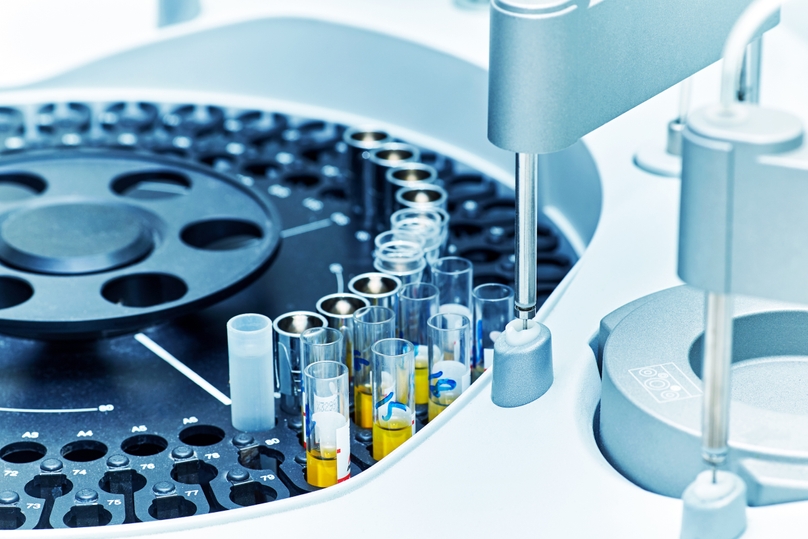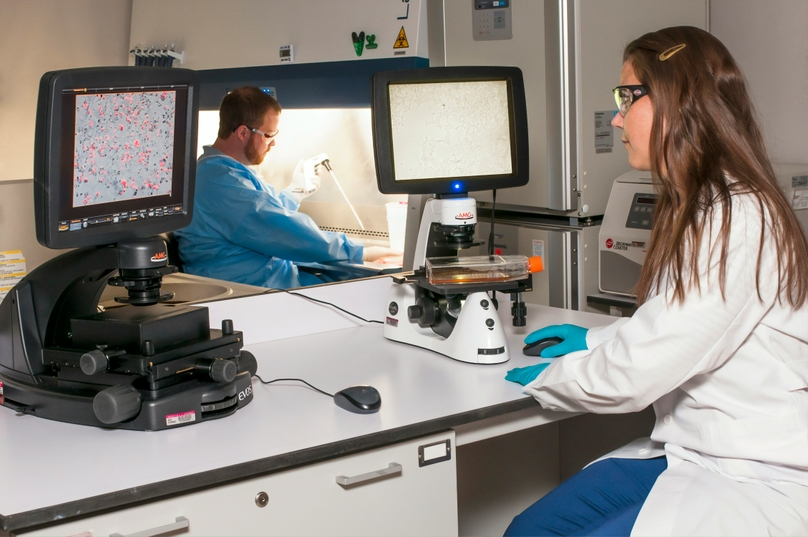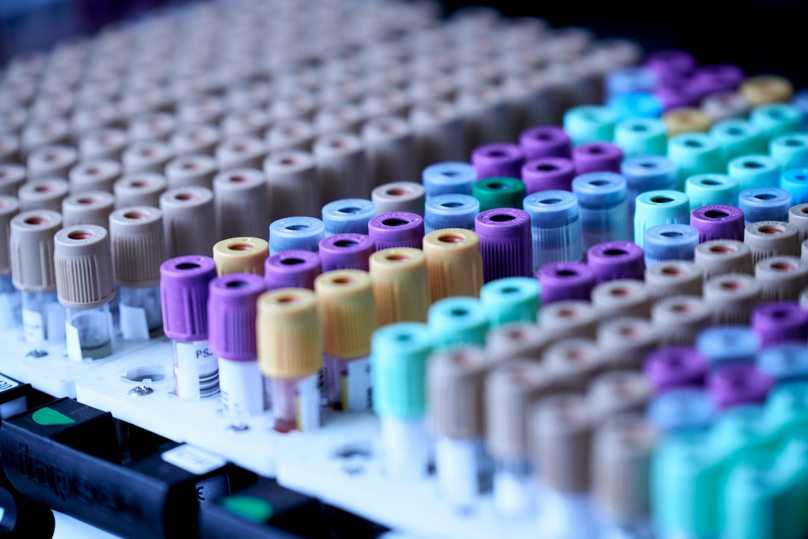What is Lab Automation?
These days, cutting-edge technological solutions are available for just about every scientific process, and lab management is no exception. Perhaps you’re not familiar with lab automation yet or you haven’t got the full picture of how automation technology can bring your lab into 2022. You’ve come to the right place.
Lab automation refers to the implementation of software solutions to perform lab processes and enhance productivity and efficiency. It can be used anywhere from keeping up to date on your inventory and easily finding samples, to high-throughput screening.
Laboratory Information Management Systems (LIMS) were first developed during the early 80s. Their commercial introduction marked a huge step in providing automated reporting features.
The implementation of a centralized computer for lab functions produced major improvements in productivity and efficiency. LIMS have evolved significantly since then, particularly in terms of functionality. Current digital lab automation workflow systems have add-on features that make them fully customizable for any clinical laboratory.
In this article, we will provide an overview on how laboratory automation solutions can advance your research and improve your lab processes.
How Lab Automation Impacts Life Science
Today’s laboratories generate huge amounts of important data. There are many ways in which lab automation can help to manage this information.
Not only that, but a LIMS can also optimize access so that all members of the research team can access the data in real-time from wherever they are. Lab automation is already being used in the following areas:
- Assays: LIMS ensures accuracy when investigating the effects of chemical compounds in several ways. Not only does it reduce errors in recording and reproducing data manually, but it also means that experimental data can easily be shared throughout the team.
- Cell culture: Cell culture is one of the most important tools used in many research laboratories. Traceability of cell culture within your lab inventory is crucial. A laboratory management system allows you to keep your lab freezer organized.
- Drug discovery: In the arena of drug discovery, lab automation goes above and beyond in terms of efficiency and accessibility. It is invaluable for handling complex information for regulatory compliance.
- Sample management: Sample management protocols are rigid and must be adhered to in order to meet lab compliance and safety regulations. A LIMS facilitates adherence to protocols by allowing team members to easily locate the samples or reagents they need without having to search through temperature-sensitive products by hand.
Improving Your Workflow with Automation
Optimizing workflow is critical to achieving the quality of results your organization demands. Given that most labs have limited resources, a lab automation software solution is a budget-friendly way to meet this goal.
Lab automation can also enhance your workflow in other ways, including:
- Reducing human error: A LIMS reduces human error by eliminating written results. It also makes reporting and record-keeping easy and improves the overall turnaround time.
- Standardization: Through standardization, a lab automation software solution can reduce direct costs by improving staff efficiency, creating savings from unnecessary equipment purchases, and decreasing training expenses.
- Adaptability: With a customizable LIMS you can use different types of automation systems for different aspects of your entire workflow.
Pre-analytical Laboratory Automation
The pre-analytical stage is the preliminary testing phase in the laboratory. Because this stage involves handling specimens, lab participants must have easy access to samples at all times. Using a LIMS in this early stage of research has the following benefits:
- Saving time: Having a single platform instead of multiple spreadsheets or other documents cuts downtime significantly when lab members are preparing experiments. This leaves them time to focus on more important tasks.
- Reducing error: An automated system helps researchers to follow quality and safety protocols, reducing human error, and preventing problems further down the line.
- Maintaining consistency: Without an automated system, labeling and reagent storage mishaps are common. A LIMS can keep these issues to a minimum, if not eliminate them altogether.
Analytical Laboratory Automation
During the analytic phase, specimens are prepared for testing. Not only can analytics phase laboratory automation significantly decrease errors, but it can also:
- Help to maintain compliance: Because of its consolidated dashboard, a LIMS facilitates compliance by preventing improper sample preparation. This eliminates costly errors and safety issues.
- Track instrument calibration: All documentation and data are centralized so that analyzers can easily keep an eye on instrument calibration and maintain compliance.
- Keep records: Lab team members can enter data such as humidity, temperature, and refrigeration in real-time. This keeps records current. They can also be shared throughout the lab.
Post-analytical Laboratory Automation
This is the final phase of the laboratory testing process. It involves the evaluation and release of test results in a timely manner. In the post-analytic phase implementing a LIMS:
- Maintains dependability: Lab automation keeps data analysis and reproducibility consistent so that the processes can be reproduced at a given time without discrepancies in results.
- Enhances shareability: Results can be shared in real-time with any team member where ever they are, so long as they have access to an internet connection.
- Improves archiving: All data can be stored safely in the system where it can easily be accessed whenever it is needed. This also eliminates the risk of lost paper documentation.
The Benefits of Automated Solutions
Software automation technologies have numerous advantages over traditional manual data recording, storing, and sharing. Some of the most important benefits include:
Streamline Your Workstation
Once you’ve used one of Genemod’s lab automation solutions, you’ll wonder how you ever managed without it. Here are just a few ways they can immediately streamline your workstation:
- Boosting your lab’s intelligence: Lab managers find our automation tools elegant and easy to use. This also makes training new team members a breeze.
- Taking the pain from data entry: Lab work shouldn’t feel like a chore. Put an end to typing spreadsheets. Genemod solutions can auto-populate your chosen data templates. Leaving you time to focus on valuable lab work.
- Eliminating data scrubbing: Because our dashboard allows team members easy access, there’s no longer a need to edit or delete inconsistent data.
Manage Sequencing
Many of our clients have already told us how our Genemod solutions have streamlined the way they search and record, have cut down significantly on the time they need to prepare their experiments, and have enhanced collaboration. Managing sequencing is no exception. Genemod solutions enable you to:
- Calculate quickly and accurately: You have several options for performing your calculations. For example, transferring your primer from a sequence-editing page to your freezer database with one easy click.
- Edit DNA: Easily convert between DNA, RNA, and a three-letter protein.
- Keep track: Store calculations in a common sequence workspace and archive them when you’ve finished.
Improve Efficiency of Diagnostics
As if that’s not enough, digitizing your lab can also improve your diagnostics efficiency. If your lab is dealing with clinical and molecular diagnostics, you need an automation solution that can handle both efficiently from receiving test requests to delivering results. A Genemod solution can help you optimize diagnostics by offering:
- Flexibility: Our freemium software solution allows you to customize your lab management system, so you only add the processes you need.
- Scalability: You can adapt and scale your system as your organization expands, minimizing your total costs.
- Functionality: All our software solutions are preconfigured. This means that your diagnostic workflows are ready to roll.
Get Powerful Lab Automation Software with Genemod
Don’t let your research get buried under reams of paperwork.
Implement lab automation to handle your data and free your team to do what they do best—create innovation. Informatics has never been easier than with Genemod.
Contact us today to find out more and let us help you take your lab into the next generation of life science.
















